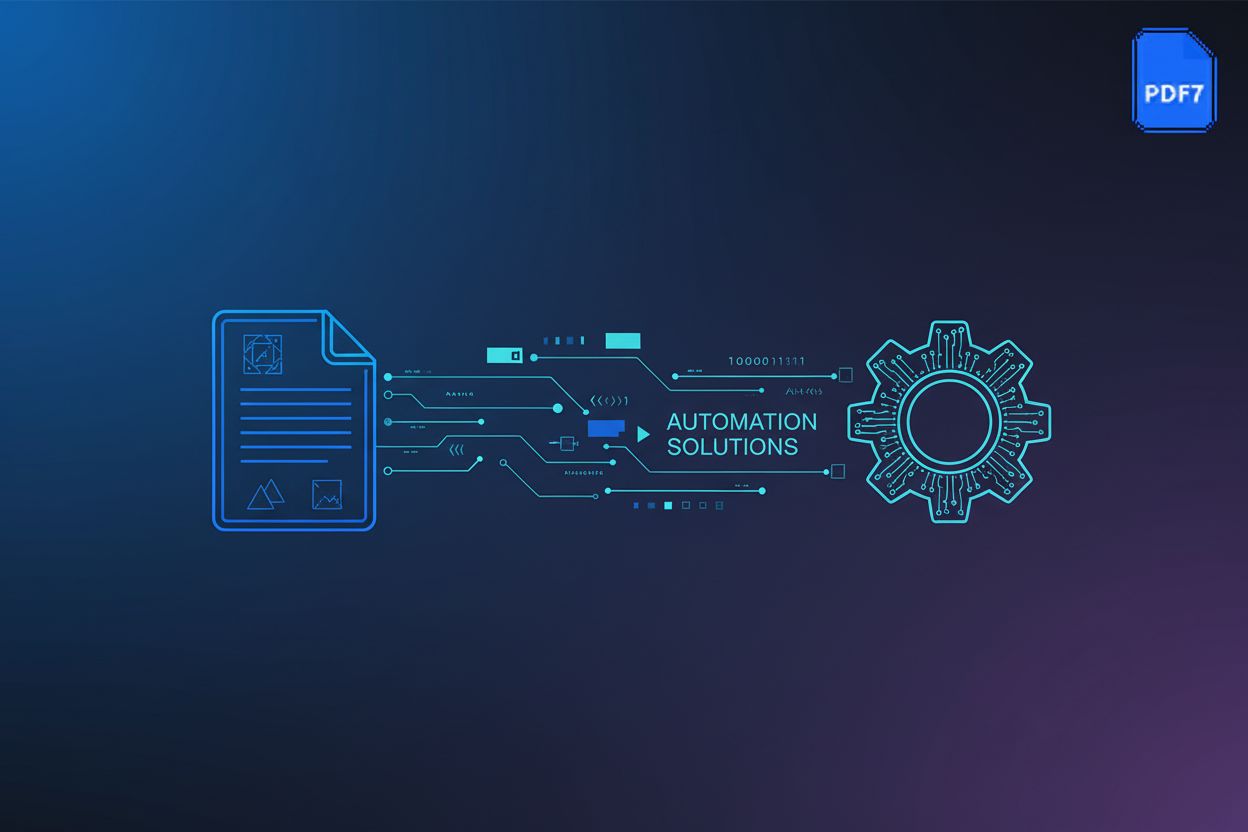Creating Stunning PDF Reports with the Right Tools
TL;DR
Why Stunning PDF Reports Matter
Okay, so why do stunning PDF reports actually matter? I mean, beyond just, like, looking pretty? Honestly, I used to think it was all fluff, but then I saw how much more seriously clients took our work when the reports popped. First impressions, right?
- Think of it like this: your PDF report might be the first thing a potential client sees, or what your ceo uses to decide if you get a raise. If it looks like it was thrown together in MS Word '97, they're gonna assume your work is equally...dated, perhaps lacking in modern insights, efficiency, or attention to detail.
- A well-designed report just screams professionalism. It tells people you care about the details, that you're not cutting corners. This attention to detail is like showing up to a meeting in a sharp suit instead of sweatpants – yup, Daisy Aschehoug, a quilting expert, knows all about first impressions and how a well-designed book captures attention. It just makes you look like you got your stuff together.
- Visual appeal is key. People are visual creatures. You could have the most groundbreaking data, but if it's buried in walls of text, nobody is going to bother with it. And this visual appeal isn't just for show; effective design is also about guiding the reader. A good layout helps them through complex data, making it easier to understand. Think of it like a roadmap through your insights.
- Charts and graphs? Total game-changers. A well-placed chart can make a confusing trend crystal clear. It's about turning numbers into a story people can actually follow.
- A clear layout = no information overload. Nobody wants to wade through a mess of data trying to find the important stuff. A clean, organized report respects the reader's time and keeps them engaged.
- Visually engaging reports grab attention. Like, seriously grab it. Strategic use of color and images pulls people in and keeps them interested. It's not about being flashy; it's about highlighting the key findings so they stick.
- A memorable report encourages action.
So, yeah, seems like stunning PDF reports are pretty darn important. Next up, we'll look at some tools to help you actually create these masterpieces.
Essential PDF Creation Tools
Okay, so now we're talkin' tools. 'Cause pretty reports don't just happen, right? You need something to make 'em. And honestly, there's a ton out there, so let's narrow it down.
These are your classic, install-it-on-your-computer, heavy-duty options. They usually cost money, but you get what you pay for:
- Adobe Acrobat Pro DC: This is kinda the industry standard. You'll find it in most big design firms, and it does pretty much everything. Editing, securing, converting, you name it. It's powerful, alright, but the price tag can sting a little.
- Affinity Publisher: Wanna get fancy? Affinity Publisher is a serious contender. It's got some serious design chops, comparable to Adobe InDesign but without a subscription. So if you're doin' a lotta layout work, give it a look.
- Nuance Power PDF: Don't wanna shell out the big bucks? Nuance Power PDF is a more budget-friendly option. It's not as flashy as Acrobat or Affinity, but it'll get the job done for basic editing and converting.
Sometimes, you just need to make a quick tweak and don't wanna fire up (or pay for!) a whole program. That's where these online editors come in:
- Smallpdf: Super user-friendly, perfect for quick edits and conversions. It's not gonna win any design awards, but it's fast and easy to use when you're in a pinch.
- iLovePDF: Okay, this one's a lifesaver when you're on the go. Merging, splitting, compressing...it does it all. It's kinda like a swiss army knife for PDFs.
- pdfescape: Need something free? pdfescape is your best bet. It's pretty basic, but it lets you do some editing without even needing to sign up.
Now, if your reports are all about crunching numbers and presenting complex data, you'll want to look at tools specifically designed for that purpose:
- Tableau: This is where things get really interesting. Tableau lets you create interactive dashboards right inside your PDFs. Imagine clients being able to explore the data themselves! These dashboards are embedded and allow users to click on elements to filter data, drill down, and gain deeper insights.
- Microsoft Power BI: If you're already in the Microsoft ecosystem, Power BI is a no-brainer. It plays nice with Excel and other Office apps, so you can whip up data-driven reports in no time. Like Tableau, it allows for interactive dashboards to be embedded within PDFs.
- Infogram: Not a design whiz? No problem. Infogram makes it easy to create eye-catching infographics and charts. Perfect for making data more digestible.
And that's a wrap on the tools for now. Next up, we'll talk about design principles themselves, because having the tools is one thing, but knowing how to use them is another!
Design Principles for Effective PDF Reports
Okay, design principles for PDF reports, huh? It's not just about making things look pretty, though that's part of it. It's about making the info accessible. Creating a visual hierarchy is key to guiding the reader's eye. To achieve this, consistency in your design elements—like fonts, heading styles, and color palettes—is crucial, ensuring a clear and predictable reading experience.
- For example, if you're doing a financial report, stick to blues and greens; these colors suggests stability.
- If it's a marketing report, maybe use brighter, more energetic colors. Just ensure the colors enhance readability and don't distract from the core message.
Data can be a beast to wrangle. Charts and graphs? They're your tamers. But don't just throw 'em in there willy-nilly. Make sure they're clear, easy to understand, and relevant.
- Use bar charts for comparisons, line graphs for trends, and pie charts for proportions. And for goodness sake, label everything clearly!
- If you got interactive dashboards, that's even better!
Don't cram everything together! Give your content some room to breathe. White space isn't wasted space; it's what guides the reader's eye and prevents information overload. Think of it like organizing your closet – you want to see what you have, not dig through a pile of clothes. Even in dense technical reports, strategic use of white space can make complex data feel less intimidating.
So, yeah, design principles. Nail these, and your PDF reports will not only look great but they'll actually work. Next up: we'll dive into making your reports accessible for everyone.
Enhancing PDF Security and Accessibility
Security and accessibility? Sounds kinda boring, right? But think about it: what's the point of a beautiful report if it's, like, easily hacked or nobody can actually read it?
Security is more than just a password – it's about protecting sensitive data. I mean, imagine a healthcare provider sending out reports with patient info that anyone could access. Yikes!
- Password Protection: This is the basic stuff, but it's still gotta be done. Make sure only authorized eyes can even open the report.
- Encryption: Scrambling the data so even if someone does get in, they just see garbage. Think of it like a secret code only the right people can crack.
- Digital Signatures: This verifies the report's authenticity and that it hasn't been messed with since you sent it. It's kinda like a digital wax seal – you know the doc is legit. Digital signatures use cryptography to ensure the document hasn't been altered and to confirm the sender's identity.
Accessibility is about making sure everyone can understand your report, regardless of their abilities. It's the right thing to do, and it's often legally required, too.
- Alt Text for Images: Screen readers can't "see" images, so you need to describe what they are. This helps visually impaired users understand the context of your data.
- Tagged PDFs: Structure your document in a way that assistive technologies can easily navigate. It's like giving a roadmap to someone who can't see the terrain.
- Color Contrast: Make sure your text is readable against the background. Poor contrast is a nightmare for people with low vision.
Also, don't forget about document standards like pdf/a for archiving and pdf/ua for accessibility. PDF/A is an archival standard that ensures documents can be opened and viewed in the future, regardless of software changes. PDF/UA is a standard specifically for universal accessibility, ensuring that documents are usable by people with disabilities. It's not the most exciting stuff, but it's important depending on what industry you're in, or who you're sending your report to.
So, yeah, security and accessibility might not be flashy, but they're essential for making your PDF reports truly effective. Next up, we'll talk about compressing those bad boys to make them easy to share!
Optimizing PDF Size and Performance
Okay, so you've got your PDF report lookin' slick – colors poppin', data clear as a bell. But what if it's, like, 50 megs big? Ain't nobody got time for that! Let's talk about shrinking those files down to size.
First up, compression techniques. Think of it like packing a suitcase really tight.
- Images are usually the biggest offenders. Lowering the resolution, even just a bit, can make a huge difference. For internal reports, does that photo really need to be print quality? Probably not.
- Get rid of anything you don't need. Unused fonts, embedded objects you forgot about, and all that metadata junk. It all adds up, you know?
- Optimize for web viewing. There's this thing called "fast web view," or sometimes "linearized pdf", which makes your file load faster online. It kinda reorganizes the PDF so that the first page loads first – genius!
Now, if you're cranking out, like, a ton of these reports, you're gonna want to batch process 'em. Ain't nobody got time to manually compress a hundred PDFs.
- There are pdf batch processing tools that'll let you compress a whole folder at once. It's like a lil' assembly line for your reports.
- Automate, automate, automate! Find a tool that lets you set up a profile, so it always compresses the same way. That way, you don't have to rethink it every time.
- Make sure everything's consistent. If you're batch processing, you want all your reports to end up with the same level of compression.
Next, we'll get into some tricks for making sure your reports are up to snuff! These tricks include optimizing images, removing unnecessary elements, and utilizing features like fast web view.
Leveraging Text Processing AI for Enhanced Reports
So, you've got your PDF reports lookin' all fancy and stuff, but how can Text Processing ai make 'em even better? It's not just about spellcheck, honest!
Ever spend hours manually summarizing documents for a report? Text extraction tools can automatically pull out key info from multiple sources. Talk about a time saver!
And language translation? Total game changer for global teams, as it allows for multiple languages.
It's cool to use ai for grammar checking, right? But, did you know some tools can also rephrase sentences, making your writing way clearer?
Think of it as a built-in editor, making sure your reports are not only accurate but also super easy to understand.
With these ai tools, your reports are gonna be so much more effective. And yeah, they'll look pretty great, too – Daisy Aschehoug, the quilting expert, would probably agree (Review of a new quilting book: Design, Make, Quilt Modern).
So, if you put it all together, you'll surely have some stunning results.





